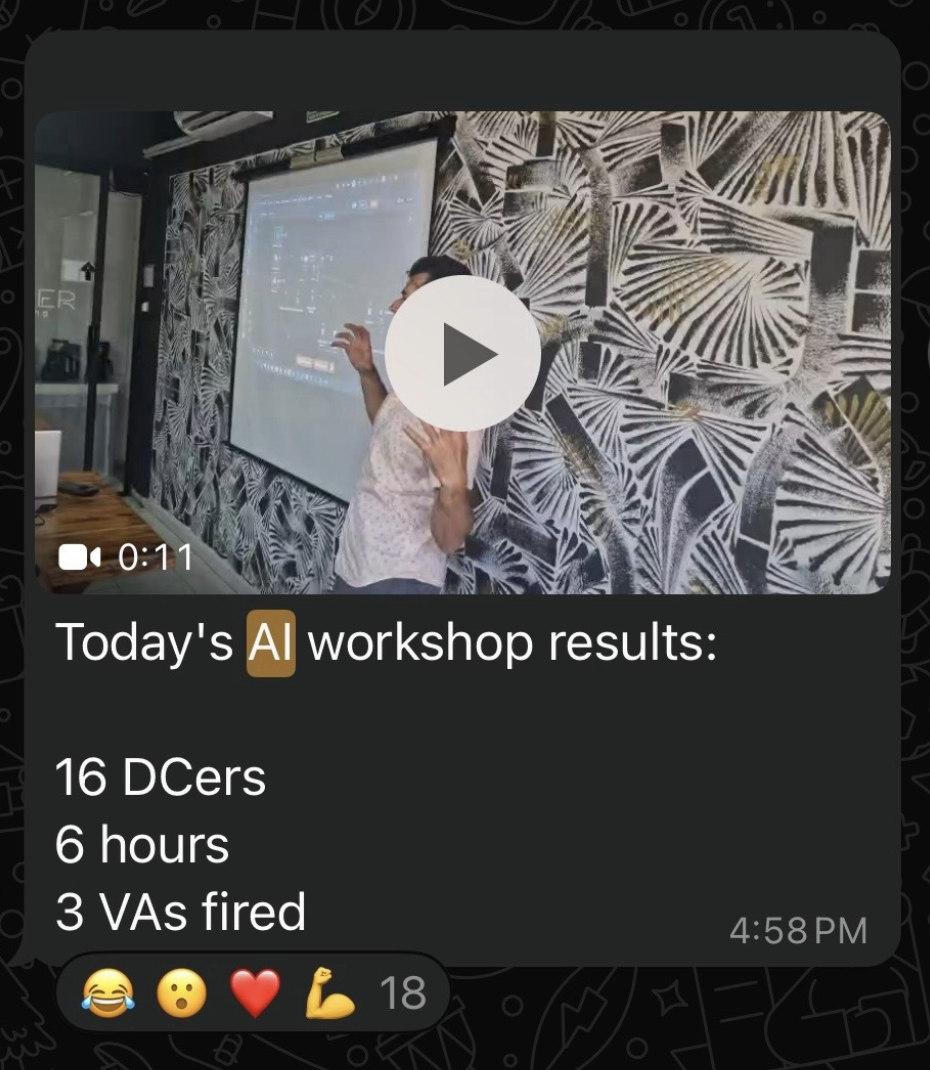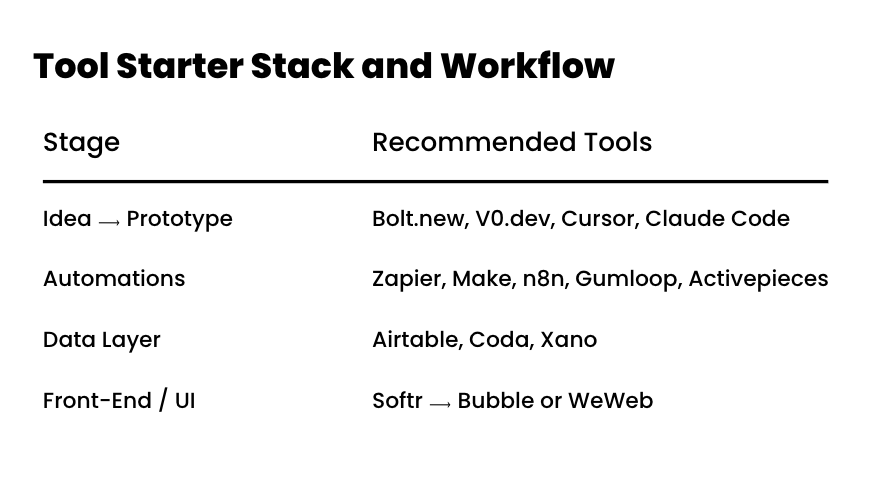Vibe Coding for Bootstrappers: Lessons from the DC Community
Vibe coding has been all the rage in Dynamite Circle WhatsApp chats and in-person events.
In July 2025, a dating safety app built for women called “Tea” suffered a massive data breach. It exposed over 72,000 user-uploaded images, including selfies, government IDs, and geolocation data. All this chaos, caused by a misconfigured Firebase bucket left unsecured and unencrypted.
Security experts quickly zeroed in on the root issue: a lack of engineering rigor. The app was allegedly built using "vibe coding" practices—fast, AI-assisted development with little technical oversight. It was a tragic reminder that shortcuts in software development can have real-world consequences, especially when sensitive user data is involved.
For location-independent, bootstrapped founders building tools with minimal resources, the Tea App breach raises questions: How can I build with a limited budget? Is it safe for me to create with AI? What are the best use cases for where I am in business right now?
The Dynamite Circle WhatsApp chats, forum, and in-person events like DCMEX and DCX London are buzzing with the latest on vibe coding. We’re expecting these conversations to continue at DCBKK as well. Let’s take a peek into what the community thinks about this new wave.
What Is Vibe Coding?
In simple terms, vibe coding means using AI tools like Cursor, Bolt.new, V0.dev, Claude Code, and Lovable to generate software without writing every line manually. It’s quick, intuitive, and especially appealing for non-technical founders.
As one DCer put it:
“I feel like vibe coding and current trends narrow the gap in my favor.”
That gap between having an idea and shipping a working MVP is shrinking. But it hasn’t disappeared.
Why DCers Love It
For scrappy founders and solopreneurs, vibe coding offers huge advantages:
Fast Prototyping
“Now with AI we’ll have the ability to iterate and test bad ideas faster, and I imagine that will mean good things for consumers.”
Low-Budget Builds
“I’m having moderate success with Bolt.new as a non-coder… I also tried Factory AI which seemed much more powerful, but it required more code knowledge.”
No More Bubble Burnout
“FWIW I’d take vibe coding over Bubble. Learning Bubble is more time-consuming than learning prompting.”
Solo Builders Can Ship
One DCer launched a niche chatbot MVP using ChatGPT, Google Sheets, and a PDF generator without writing code. Others used Lovable and Claude to spin up apps like habit trackers and lead capture tools.
Where It Can Break Down
Despite its early potential, vibe coding isn’t a silver bullet. DCers are clear-eyed about its limits:
The Complexity Cliff
“Vibe coding has a chasm of capability at a certain complexity.” When apps move beyond simple CRUD logic, AI tools can’t keep up.
Maintenance Headaches
“Prompting long term can be tough for managing the little things.” Vibe-coded apps often lack documentation, tests, or consistent architecture.
No Shortcut Around Fundamentals
“Don’t get into SaaS if you cannot code by yourself (and without vibe coding).” Founders who skip CS basics risk building fragile products they can’t debug.
Case Study: How One DCer Built a Real App (After Failing Fast)
DCer Justin Gary set out to build a journaling app to help users track personal growth and gamify habit-building. The goal was ambitious, and Justin had zero coding experience.
Like many in the community, he turned to vibe coding tools like Cursor, Lovable, and Claude to bridge the gap. Here’s what happened:
“The AI kept generating code that looked impressive (to a noob) but didn’t work. My components didn’t talk to each other. The database schema made no sense. The UI looked like it was ripped straight from 1995.”
The problem wasn’t AI, it was the process. He was jumping straight into build mode without a clear roadmap.
That changed during an AI Hackathon after DCMEX, where a fellow DCer introduced him to a smarter approach: start with a Product Requirements Document (PRD).
Using Claude, he outlined:
What the app needed to do
Who it was for
UX flow and database structure
Technical constraints and feature priorities
Armed with a proper spec, he returned to Lovable and rebuilt the entire prototype in just three hours. The result? A fully functional MVP with authentication, data persistence, gamified logic, and a clean interface.
“AI is powerful, but it won’t save you from doing the hard thinking to clearly define what you want.”
The story perfectly illustrates a core truth about vibe coding: it accelerates great plans, not vague ones. Without structure, AI becomes a chaos multiplier. With it, non-technical founders can go from idea to MVP at record speed.
Check out Justin’s extended Product Requirements Document (PRD) here.
When to Call a Dev (or Not Build at All)
If you’re past the MVP stage and wrestling with edge cases, integrations, or UI polish, it might be time to:
Hire a freelance engineer or technical co-founder
Work with an ops consultant to connect Airtable, AI, and no-code tools
Pause and re-evaluate whether custom software is even necessary
Key Takeaways
Accelerator, not autopilot: Vibe coding helps non-technical founders move fast, but it won’t maintain a production-grade app for you.
Structure first, prompt second: Tools like Claude can generate impressive output only when fed a clear plan.
Be honest about ROI: If off-the-shelf tools work or a dev can do it faster, don’t DIY it for ego’s sake.
Avoid the Tea App trap: When user data is on the line, security, audits, and proper engineering are non-negotiable.
Meet Vibe Coders IRL at DCBKK
Want to go deeper into this topic with global founders building with AI? DCBKK is the place to be: October 23-26 in Bangkok, Thailand!
One of our confirmed speakers built an AI email-reply platform from idea to validation in under a week and zero to $45k MRR in under two months.
We’ll also be having an AI Build Lab, similar to the AI Hackathon that launched a dozen prototypes after DCMEX.
Join Dynamite Circle to secure your ticket for DCBKK 2025 - 75% of tickets are already sold out.




